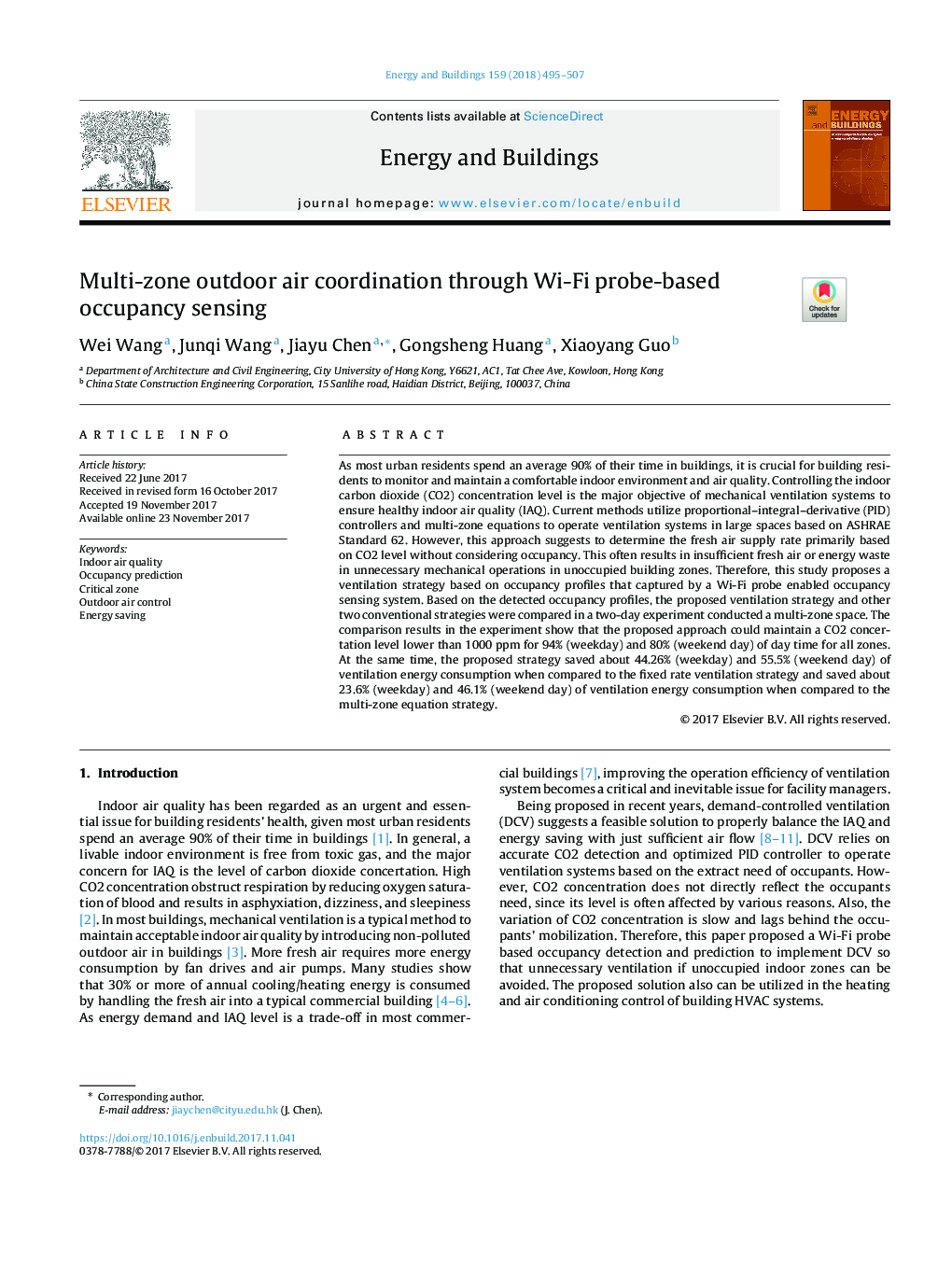| Article ID | Journal | Published Year | Pages | File Type |
|---|---|---|---|---|
| 6729330 | Energy and Buildings | 2018 | 13 Pages |
Abstract
As most urban residents spend an average 90% of their time in buildings, it is crucial for building residents to monitor and maintain a comfortable indoor environment and air quality. Controlling the indoor carbon dioxide (CO2) concentration level is the major objective of mechanical ventilation systems to ensure healthy indoor air quality (IAQ). Current methods utilize proportional-integral-derivative (PID) controllers and multi-zone equations to operate ventilation systems in large spaces based on ASHRAE Standard 62. However, this approach suggests to determine the fresh air supply rate primarily based on CO2 level without considering occupancy. This often results in insufficient fresh air or energy waste in unnecessary mechanical operations in unoccupied building zones. Therefore, this study proposes a ventilation strategy based on occupancy profiles that captured by a Wi-Fi probe enabled occupancy sensing system. Based on the detected occupancy profiles, the proposed ventilation strategy and other two conventional strategies were compared in a two-day experiment conducted a multi-zone space. The comparison results in the experiment show that the proposed approach could maintain a CO2 concertation level lower than 1000 ppm for 94% (weekday) and 80% (weekend day) of day time for all zones. At the same time, the proposed strategy saved about 44.26% (weekday) and 55.5% (weekend day) of ventilation energy consumption when compared to the fixed rate ventilation strategy and saved about 23.6% (weekday) and 46.1% (weekend day) of ventilation energy consumption when compared to the multi-zone equation strategy.
Related Topics
Physical Sciences and Engineering
Energy
Renewable Energy, Sustainability and the Environment
Authors
Wei Wang, Junqi Wang, Jiayu Chen, Gongsheng Huang, Xiaoyang Guo,
